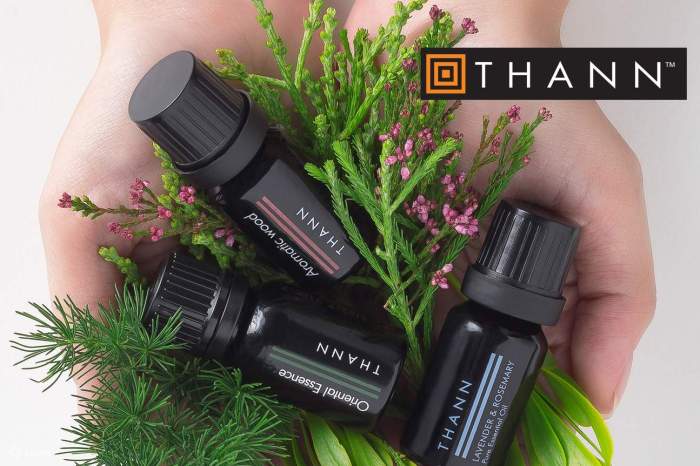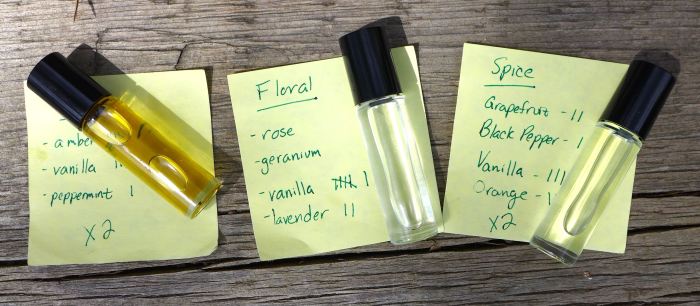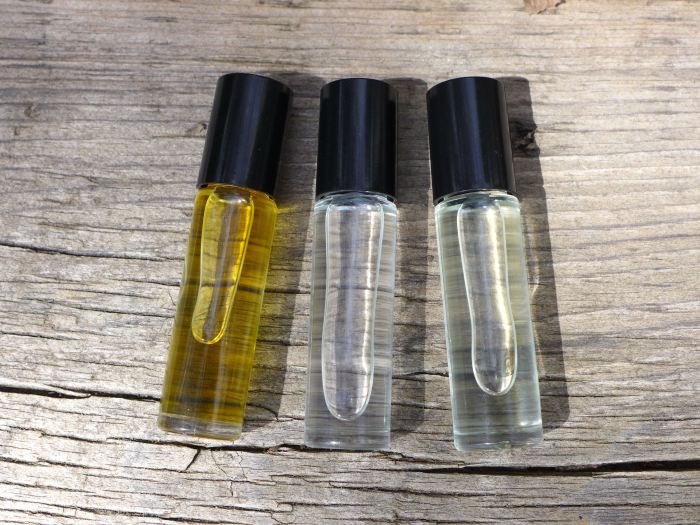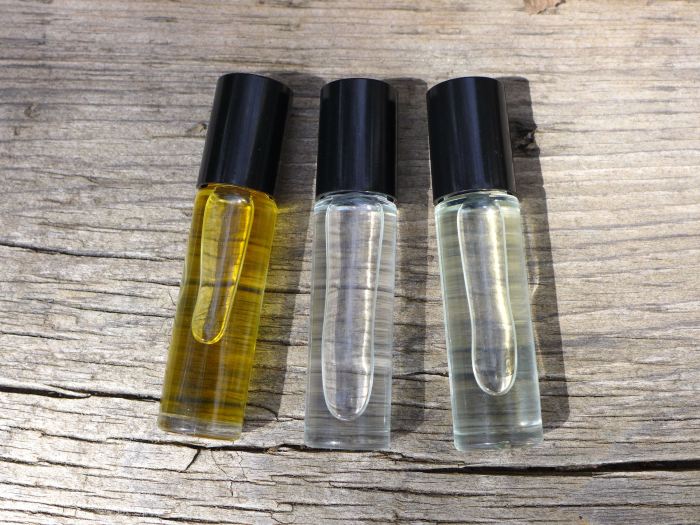DIY fragrance is a captivating trend that allows you to express your unique personality through personalized scents. The art of crafting your own fragrances opens up a world of creativity, empowering you to design scents that perfectly reflect your mood, style, and preferences.
From understanding the fundamentals of fragrance notes and concentration to exploring the diverse world of essential oils and fragrance ingredients, this guide will equip you with the knowledge and skills to create your own signature scents. We’ll delve into various DIY fragrance techniques, share inspiring recipes, and provide practical tips for creating, testing, and storing your custom blends.
Understanding Fragrance Basics: Diy Fragrance

Before diving into the world of DIY fragrance, it’s essential to grasp some fundamental concepts about how fragrances work. This will help you create blends that are both appealing and long-lasting.
Fragrance Notes
Fragrance notes are the different olfactory components that make up a perfume. They are categorized into three distinct groups: top, middle, and base notes.
- Top Notes: These are the initial scents you smell when you first apply a fragrance. They are usually light and volatile, evaporating quickly. Top notes typically include citrus fruits, herbs, and spices.
- Middle Notes: These notes emerge after the top notes have faded. They are more complex and longer-lasting, forming the heart of the fragrance. Middle notes often include floral, fruity, and herbal scents.
- Base Notes: These are the deepest and most enduring notes, providing a grounding foundation for the fragrance. They are typically warm, woody, and musky, and they linger on the skin for hours. Base notes often include amber, vanilla, musk, and sandalwood.
Fragrance Concentration
Fragrance concentration refers to the percentage of fragrant oils present in a perfume. Different concentrations result in varying levels of intensity and longevity. Here are some common fragrance concentrations:
- Perfume (Parfum): The most concentrated form, containing 20-30% fragrant oils. It has the strongest scent and lasts the longest, typically 8 hours or more.
- Eau de Parfum (EDP): This concentration contains 15-20% fragrant oils. It is less intense than perfume but still long-lasting, lasting around 5-7 hours.
- Eau de Toilette (EDT): This concentration contains 5-15% fragrant oils. It has a lighter scent and lasts around 3-4 hours.
- Eau de Cologne (EDC): This concentration contains 2-4% fragrant oils. It has a very light scent and lasts for about 2 hours.
Fragrance Families
Fragrances are often categorized into families based on their dominant olfactory characteristics. Here are some of the most common fragrance families:
- Floral: These fragrances are dominated by flower scents, such as rose, jasmine, lily, and lavender.
- Citrus: These fragrances feature bright, zesty notes from citrus fruits like lemon, orange, grapefruit, and bergamot.
- Woody: These fragrances are characterized by warm, earthy scents from woods like sandalwood, cedarwood, and vetiver.
- Oriental: These fragrances are often rich, spicy, and exotic, featuring notes like amber, vanilla, cinnamon, and patchouli.
- Fresh: These fragrances evoke a sense of cleanliness and freshness, often incorporating aquatic, green, or herbal notes.
- Fruity: These fragrances are dominated by sweet, juicy notes from fruits like berries, apple, peach, and pear.
- Gourmand: These fragrances are inspired by food, often featuring sweet, gourmand notes like chocolate, caramel, and coffee.
DIY Fragrance Recipes and Inspiration

Creating your own fragrances is a fun and rewarding experience, allowing you to express your unique style and personality. You can craft scents that perfectly match your mood, preferences, and even the season. This section will provide you with various DIY fragrance recipes and tips for customization, along with inspiration for unique and creative fragrance combinations.
DIY Fragrance Recipes for Different Fragrance Families
Fragrance families are groups of scents that share similar characteristics. By understanding the different families, you can choose the base notes and accords that will appeal to you most. Here are some DIY fragrance recipes for popular fragrance families:
Floral
- Rose & Jasmine: Combine 10 drops of rose essential oil, 5 drops of jasmine essential oil, and 10 drops of sweet almond oil as a carrier oil. This combination creates a classic floral scent that is both romantic and elegant.
- Gardenia & Lily: Blend 8 drops of gardenia essential oil, 6 drops of lily essential oil, and 12 drops of jojoba oil as a carrier oil. This fragrance is sweet and alluring, with a touch of powdery notes.
Citrus
- Lemon & Bergamot: Mix 12 drops of lemon essential oil, 8 drops of bergamot essential oil, and 10 drops of grapeseed oil as a carrier oil. This combination is refreshing and invigorating, perfect for a summer day.
- Orange & Grapefruit: Combine 10 drops of orange essential oil, 6 drops of grapefruit essential oil, and 14 drops of apricot kernel oil as a carrier oil. This fragrance is uplifting and cheerful, with a slightly tart edge.
Woody
- Cedarwood & Sandalwood: Blend 10 drops of cedarwood essential oil, 8 drops of sandalwood essential oil, and 12 drops of fractionated coconut oil as a carrier oil. This combination is warm and grounding, with a slightly smoky aroma.
- Patchouli & Vetiver: Mix 8 drops of patchouli essential oil, 6 drops of vetiver essential oil, and 16 drops of avocado oil as a carrier oil. This fragrance is earthy and sensual, with a musky undertone.
Fruity
- Strawberry & Raspberry: Combine 10 drops of strawberry essential oil, 8 drops of raspberry essential oil, and 12 drops of sweet almond oil as a carrier oil. This combination is sweet and playful, with a hint of tartness.
- Peach & Mango: Blend 8 drops of peach essential oil, 6 drops of mango essential oil, and 16 drops of jojoba oil as a carrier oil. This fragrance is tropical and juicy, with a sweet and creamy aroma.
Tips for Customizing and Adjusting DIY Fragrance Recipes
- Start with a base recipe and adjust the proportions of essential oils to create your desired scent profile. For example, if you prefer a stronger floral scent, increase the amount of floral essential oils.
- Experiment with different carrier oils to enhance the fragrance and create different textures. For example, jojoba oil is lightweight and easily absorbed, while sweet almond oil is moisturizing and nourishing.
- Consider adding a touch of alcohol to your fragrance to help the scent last longer. Vodka or witch hazel are good options.
- Test your fragrance on a small area of skin before applying it all over. This will help you determine if you are sensitive to any of the ingredients.
- Store your fragrance in a cool, dark place to prevent it from degrading.
Inspiration for Unique and Creative Fragrance Combinations
- Combine unexpected ingredients to create a signature scent. For example, try blending citrus and woody notes for a fresh and grounding fragrance, or mix floral and spicy notes for a warm and alluring scent.
- Think about your personal style and preferences when creating your fragrance. Do you prefer light and airy scents, or rich and complex fragrances? What are your favorite colors, textures, and seasons?
- Draw inspiration from nature, travel, and memories. What scents remind you of your favorite place or time of year? What fragrances evoke a sense of calm, excitement, or nostalgia?
- Don’t be afraid to experiment and have fun! The possibilities are endless when it comes to creating your own fragrance.
Remember: Always use essential oils in moderation, and dilute them with a carrier oil before applying them to your skin. Do a patch test before applying any new fragrance to your skin to avoid allergic reactions.
Safety and Storage

Creating your own fragrances is an exciting endeavor, but it’s crucial to prioritize safety and proper storage to ensure the longevity and quality of your blends. Handling essential oils and other fragrance ingredients requires careful attention, and storing your creations correctly will help prevent spoilage and maintain their aromatic integrity.
Safety Precautions
- Always work in a well-ventilated area when handling essential oils and fragrance ingredients. Essential oils are highly concentrated and can be irritating to the skin and respiratory system. Avoid direct contact with your eyes, nose, and mouth.
- Keep essential oils and other fragrance ingredients out of reach of children and pets. They can be toxic if ingested, so it’s essential to store them safely.
- Use gloves when handling essential oils, especially if you have sensitive skin. This helps prevent skin irritation and absorption.
- Always dilute essential oils in a carrier oil before applying them to your skin. Never use essential oils undiluted, as they can cause severe irritation or allergic reactions.
- Store essential oils in dark, cool, and dry places. Exposure to sunlight, heat, and moisture can degrade the quality of essential oils.
- Always refer to the safety information provided by the manufacturer of essential oils and fragrance ingredients. Each oil has unique properties and precautions that need to be considered.
Storage for Fragrance Blends, Diy fragrance
- Store your DIY fragrances in airtight containers to prevent evaporation and oxidation. Glass bottles with tightly fitting lids are ideal for storing fragrance blends. Amber or cobalt blue glass bottles are best, as they offer protection from UV light.
- Avoid storing your fragrances in direct sunlight or in extreme temperatures. Heat and light can degrade the fragrance and cause it to become rancid.
- Store your fragrances in a cool, dark, and dry place. A cool, dark closet or drawer is an excellent location for storing your fragrances.
Extending Shelf Life
- Use high-quality ingredients: The shelf life of your DIY fragrances will be longer if you use high-quality essential oils and fragrance ingredients. Choose oils that are pure, organic, and ethically sourced.
- Store your fragrances in small batches: This helps prevent spoilage, as you’ll use up the fragrance quicker.
- Avoid using preservatives: While preservatives can extend the shelf life of fragrances, they can also alter the scent and potentially cause skin irritation. If you decide to use preservatives, choose those that are safe for skin and fragrance.
- Label your fragrances with the date of creation: This helps you track the age of your fragrances and determine when they need to be replaced.
Embark on a journey of olfactory exploration, experiment with different fragrance combinations, and discover the joy of crafting your own unique scents. With the right knowledge and tools, you can create a fragrance wardrobe that reflects your individual style and personality, leaving a lasting impression wherever you go.
DIY fragrance is a fun and creative way to personalize your scent, and you can even incorporate natural ingredients like essential oils. However, if you’re looking for a more specific fragrance, you might want to explore options like estrace , a medication used for hormone replacement therapy. While not directly related to fragrance, it highlights the diverse world of scents and the many ways they can be used for different purposes.

